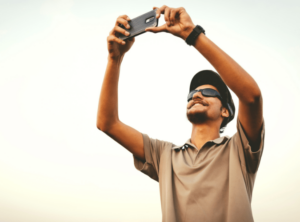Finally abolish the protection of photographs, § 72 UrhG!
The Copyright protects works. Works within the meaning of the Copyright Act (UrhG) are personal intellectual creations. Put simply, this means that a certain degree of creativity (so-called "level of creation") is required if you want to claim copyright.
Ancillary copyrights in copyright law
Ancillary copyrights in the Copyright Act play a decisive role in the protection of intellectual property, especially when it comes to the use and exploitation of performances that go beyond purely creative creations. These rights apply to those who invest their time, energy and resources in the creation of works that are based not only on individual creativity, but also on a certain degree of economic, organizational or technical effort.
An example of ancillary copyrights are the copyrights for producers of sound recordings. These rights ensure that those who invest in the production of music albums have the exclusive right to reproduce, distribute and make their recordings available to the public. This creates the economic incentive to invest in the music industry and enables the costs of production to be recouped.
Short: Ancillary copyrights do not protect creativity, but work performance.
The ancillary copyright for photographs, Section 72 UrhG
According to § Section 72 UrhG photographers enjoy a Protection for their photographs that is similar to copyright. This means that the photographer, as the owner of the ancillary copyright, has the exclusive right to decide on the use of his photograph. This includes, in particular, the right of reproduction, the right of distribution and the right to make available to the public.
The ancillary copyright for photographs applies regardless of whether the photograph reaches the level of personal creation required for traditional copyright. It protects the photographer's investments in equipment, lighting conditions, staging and other technical aspects that contribute to the creation of a high-quality photograph.

So much for the theory. In practice, this means that jvery photo, no matter how poorly and lovelessly it was taken, is protected by copyright law is. So whenever you pull out your smartphone and start snapping, you acquire an ancillary copyright that you can enforce in court with one hundred percent certainty.
The ancillary copyright for photographs is a dinosaur
The Copyright Act in its current form came into force in 1966. The ideas behind the content of the law therefore date back to the fifties and sixties of the last century. The older ones among you will remember: films were stored in small tins in the fridge, each shutter cost half a fortune, only a few handfuls of pictures would fit on these films, the desired object had to be carefully aimed at by hand and the aperture you chose yourself would hopefully match the exposure time you also chose freely. To a certain extent, it was an art to produce a decent, sharp image at all.
Anyone can take good photos today
The writer of these lines, lawyer Robert Meyen, is himself an ambitious amateur photographer. And of course I know that it takes a good eye and a little technical finesse to take good pictures. I know even more that it takes years of experience to take outstanding pictures. But that's not the point here.
Every compact camera and every smartphone naturally has an autofocus function and automatically calculates the focal length, ISO value and exposure. Even children's cameras, which are available from well-known online retailers from around €30, can do this.
Good compact cameras and high-end smartphones go far beyond this, creating ten images at once and using artificial intelligence to calculate a perfect mix and correct all parameters to ensure good results even in difficult lighting conditions.
§ Section 72 UrhG is the super right of incompetents and troublemakers
There is talk of evil warning lawyers everywhere. The legislator has introduced regulations in the Copyright Act that slow down the creative person and favor the copyright infringer. The German government also felt compelled to put a stop to "warning lawyers" in the UWG and has excluded the reimbursement of costs for the vast majority of infringements on the Internet. Although this has slowed down one or two law firms and interest groups, there was no real, economically relevant problem before. On the other hand, the scammers, touts and scam artists now have more freedom than ever. The law that was supposed to protect the "little man" now exposes him to even greater dangers.
But Section 72 UrhG has survived all these debates, efforts and legal reforms. Yet it is nothing other than the super right of those who like to harm others, who like to cause trouble, who want to make money out of nothing.
In 2018, the Federal Court of Justice can deal with a really bad photo of a sports car. The BGH itself explains just how bad:
In this context, it must be taken into account that the image of the photo submitted to and assessed by the Court of Appeal shows numerous elements that speak against a professional design. These are the cropped and disturbing shopping cart protruding into the picture on the left, the cropped yellow frame above it with the likewise cropped letter "e" in an obviously orange color, the arrow pointing away from the motif of the sports car on the right edge of the picture, the green emergency exit sign attached above the windshield in an unmotivated manner, the blue elements in the shop window visible in the background of the vehicle and the foreground of road asphalt with a white directional arrow occupying about one fifth to one quarter of the entire picture.
In the further course of the judgment, one can really sense the contempt of the federal judges with regard to § 72 UrhG, but also the regret of being bound by applicable laws.
Famous profiteer of § 72 UrhG: Folkert Knieper from marions-kochbuch.de
A certain Dipl. Ing. Folkert Knieper runs the recipe website marions-kochbuch.de with his wife Marion. His wife Marion cooks and writes recipes, while Folkert Knieper quickly snaps off the freshly cooked meal.
But food photography is no easy undertaking: A meal quickly loses its shine after cooking and falls apart. Food photographers therefore like to work with hairspray to preserve the food and give it a shine. In addition, the light has to be right if you want to conjure up a really good food picture.
Dipl. Ing. Folkert Knieper doesn't do any of that. He just takes pictures.
However, this has been enough for him to have been Thousands of warnings to send out. We recently received one of these: a bar owner had illustrated three dishes the size of a fingernail on a flyer. Lawyer Mirco Lehr from CYFIRE Attorneys at Law would like no less than €5,600 for it.
As of today, the Knieper family has probably earned several million with their cookbook. And this is despite the fact that Folkert Knieper's photography would foreseeably never be commissioned by honest means.
We are happy to give you a warning for good photos!
As an intellectual property law firm, we earn our money with cease-and-desist letters. And we believe it is absolutely right that "real" photographers should not simply be robbed of their work. As in the legal profession, a good photograph requires a lot of knowledge, preparation, technical understanding and a good eye. The unauthorized use of these images is "theft" and these photographers deserve protection. We are happy to be there for these photographers.
§ Section 72 UrhG must go!
Today, taking a photo is no longer work at all. It is not an achievement. And where there is no work, there is no need for ancillary copyright.
... or at least be restricted.
Admittedly, the call for abolition is provocative. It also has a crucial catch: among the many photographers out there, there are numerous whose work is outstanding, but not exceptionally creative. This includes product photography first and foremost. Here, the result is not a "personal intellectual creation". And yet it is the result of hours of searching for the right setting, the right choice of equipment, a fine interplay of lighting and much more. If you don't want to leave these photographers unprotected, you need an ancillary copyright. This would require an undefined legal term that represents the effort invested in a photograph. The courts would then have to fill this legal concept with life.
